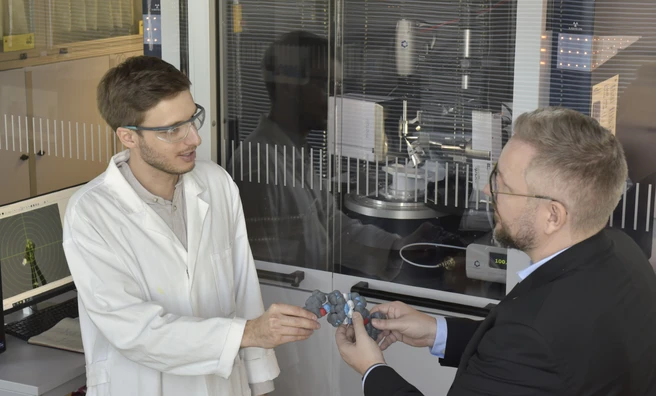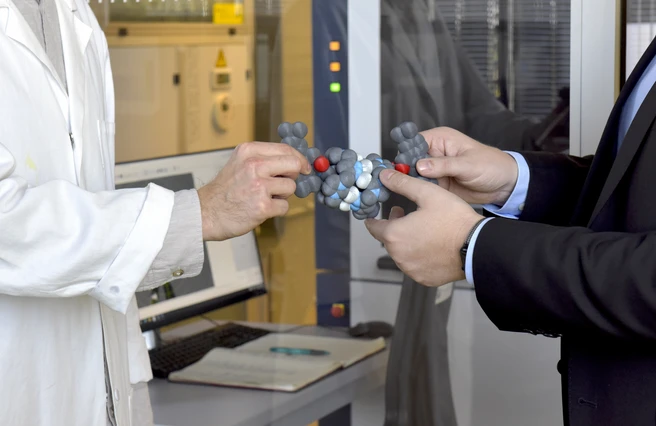A research team from the Technical University of Munich (TUM) and the University of Bologna has made a groundbreaking discovery in the field of molecular machines: A bulky metal-organic macrocycle, embedded in a [2]rotaxane structure, accelerates the cleavage of a protecting group by a factor of 36.
At the center of the study is the Fmoc group, a widely used protecting group in organic synthesis and a functional component in molecular machines. Typically, its reactivity is hindered by adjacent macrocycles due to steric shielding. However, the team led by PD Dr. Alexander Pöthig has shown that a specific metal-organic macrocycle, a so-called “pillarplex”, significantly enhances the reactivity of the Fmoc group.
The key lies in the mechanosteric effect – a newly introduced concept describing how mechanical entanglement in molecules can influence reactivity through spatial preorganization. In this case, the macrocycle forces the Fmoc group into a “wrapped” conformation that exposes its reactive site, thereby facilitating base-induced cleavage.
Thomas Pickl, first author of the publication, summarizes the results of the study as follows: “Our study shows that chemical reactions in so-called mechanically interlocked molecules can be precisely controlled through the spatial arrangement of individual components. Our goal is to develop molecular systems in which a chemical reaction is only activated in the immediate vicinity of this macrocycle – acting like a built-in switch. For example, molecular motors could be designed where certain steps in the machine’s motion cycle occur only when a functional group is brought into the correct position. Alternatively, molecular reactors could be created where reactions take place only once a part of the system is mechanically shifted within the system.”
The results were supported by a combination of NMR spectroscopy, single-crystal X-ray diffraction, and quantum chemical DFT calculations. Control experiments with alternative stopper groups confirmed that the observed reactivity enhancement is specifically due to the interaction between the Fmoc group and the pillarplex.
“Close collaboration with Prof. Massimiliano Curcio from the University of Bologna enabled us not only to gain a detailed understanding of the accelerated reactivity of our system, but also to measure it precisely. Our pillarplex acts much like an organocatalyst: it specifically recognizes one side of the aromatic Fmoc group and aligns it optimally. In the future, we aim to explore whether this mechanism can be transferred to other systems”, says Alexander Pöthig.
Publication:
Spotlight on Mechanosterics: A Bulky Macrocycle Promotes Functional Group Reactivity in a [2]Rotaxane, Journal of the American Chemical Society, DOI: https://doi.org/10.1021/jacs.5c08210
Further Information & Links
- Alexander Pöthig, Chair of Inorganic and Organometallic Chemistry, Supramolecular Organometallics
- Catalysis Research Center (CRC)
- Massimiliano Curcio, Universität Bologna
Press contact
communications(at)nat.tum.de
Team website



